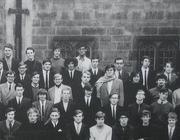

Research Interests
Simulation of the physical, chemical and biological processes that determine atmospheric composition. Development of (1) detailed numerical models of photochemistry and atmospheric radiation, and (2) global chemical transport models that describe ozone and other trace gases. Studies include the predicted effects of volcanic sulfate aerosols on stratospheric ozone loss, the role of clouds in scattering sunlight and altering photochemistry, and the non-linearities in chemical systems that lead to sudden changes such as the depletion of ozone caused by CFC increases.
Numerical models of atmospheric chemistry must simulate the transport of trace species by winds, convective mixing, boundary layer exchange with the surface, and exchange between the stratosphere and troposphere. Such models are used to predict future changes in the atmosphere and to analyze global data sets. Observed trace gas distributions are used as measures of the atmospheric circulation or alternatively as indicators of the location and strength of sources. Such a quantitative understanding of these causal relationships is an essential element of assessments of chemical and climatic change, and it is needed to convince governments and the public to make tough environmental choices.

